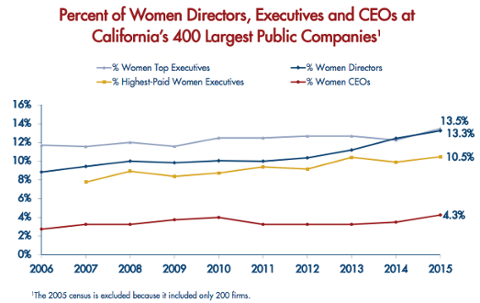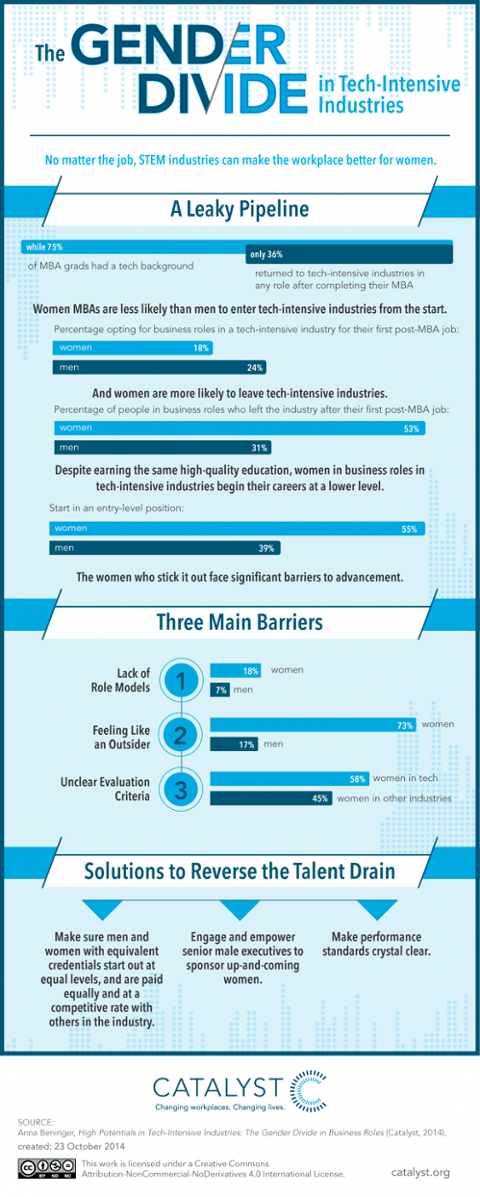In recent months, it’s become more apparent than ever that
the culture inside many IT organizations isn’t welcoming to women. Whether the result of benign neglect or outright failure to call misogynistic behavior to account, the end result is that there are fewer women as a percentage of the IT workforce: a recent
New York Times article reported that women hold only 25 percent of IT jobs, and that roughly half will eventually quit to pursue a completely different line of work, such as self-employment or a nonprofit position. The irony of this is that many tech executives feel that IT teams that include women often get more done. Kirsten Wolberg, vice president of technology for
PayPal, reports that application development teams that include women as members are 10 to 15 percent more productive than those that don’t. “Women tend to work more cohesively,” she said. “They also tend to connect with the customer more when trying to solve a problem.”
Click here to find IT management jobs. The lack of women on IT teams could stem, at least in part, from a relatively low number of female STEM (science, technology, engineering and mathematics) graduates. In 2012, for example, only 15.1 percent of young women surveyed by the National Institute of Science indicated that they intended to pursue a STEM discipline as a major,
while a mere 0.4 percent planned to obtain a computer-science degree. Wolberg believes that, among her male peers, the hostility towards women taking mathematics was palatable, and attributed that hostility to the intense level of competition that exists in the STEM fields.
Upload Your ResumeEmployers want candidates like you. Upload your resume. Show them you're awesome.
Susanna Williams, principal for consulting firm BridgED Strategies, said that, when she was growing up, all the math teachers in high school where male: “After the eighth grade, all the math teachers were men… That makes it really hard for a woman to find a mentor.” Without mentors, women often drift into other fields. In the absence of women, males dominate the mathematics culture, with negative effects down the road. Ritankar Das, CEO of See Your Future, a nonprofit learning platform aimed at women and minority students, thinks that, while it’s incumbent on companies to put training programs in place to educate employees about acceptable behavior in the workplace, the problem isn’t going to be permanently solved until it’s also addressed early: “It’s a systematic problem that will take time to solve.” Alexandra Meis, chief product officer for Kinvolved, a provider of online attendance-tracking for schools, believes that issues with interacting with men exists both inside and out of IT. Venture capitalists, for example, can be downright patronizing towards women: “I’ve sat next to a guy who has no revenue and the investor wants to know everything about their business… In the meantime, I’m working in a business that is already generating hundreds of thousands of dollars in revenue.” On the other hand, Meis noted, managing a male-dominated IT culture can be a lot easier when the leader of the IT team understands how to work well with women: “In terms of managing that interaction, our CTO is great.” To a certain degree, many males working in the IT space are easily brought back into acceptable behavioral norms by a forceful personality. But the need for that force shows the pervasiveness of the underlying problem.
Related Articles
Image: KieferPix/Shutterstock.com 


